The Top 5 Best Spades for Metal Detecting UK — Digging Tools That Make Treasure Hunting Easier
- Digging History
- Oct 20
- 6 min read
Tailored for UK detectorists & brought to you by DiggingHistory.co.uk
If you’re out clanging around fields, parks, or beach edges with your detector, you soon discover that your digging tool is every bit as important as the machine making the “boop”. After all, what good is a great signal if the spade breaks mid-pluck, you ruin your boots, or you end up with a massive hole and no find? Here then are five excellent digging tools (spades/shovels) that make life easier for the serious detectorist and yes, they’re all available in the UK (on big online shelves you know which I'm hinting at). I’ve selected them with metal-detecting in mind: durability, shape, ease of use, suitability for British soils, and a bit of fun.
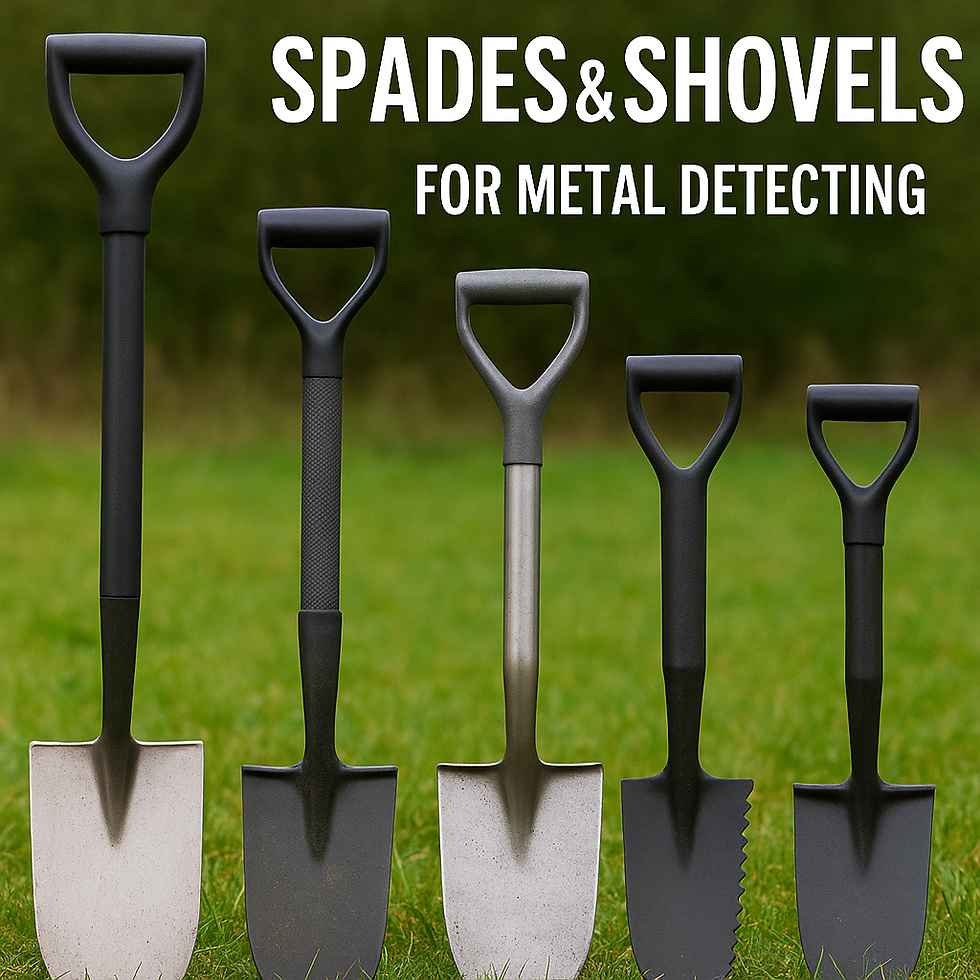
What to look for in a good detecting spade
When it comes to choosing the best spade for metal detecting UK hobbyists know that not all digging tools are created equal. The right spade can make the difference between a clean, efficient recovery and a back-breaking battle with stubborn soil. Whether you’re unearthing Roman coins in rural fields or modern relics on the coast, a sturdy, detector-friendly spade built for British ground conditions is essential.
Key features
Blade design and size – You’ll want something that can cut through roots, go deep enough for a find, but not so massive it imprisons you in a hole. Some detectorists favour a pointed or serrated blade for tricky ground.
Handle & grip comfort – Long sessions, cold hands, awkward angles: a good handle helps. A plastic D-handle is nicer in winter than bare metal.
Durability & construction – British forums stress that solid-forged or strong steel beats flashy cheap tools.
Weight vs portability – You don’t want a sledge-hammer every time, especially if you’re sneaking into a public park. Some prefer shorter handles or compact tools for that.
Suitability to terrain – Clay, heavy roots, beach sand: each has different demands. The right blade shape can save your back.
In short: pick something robust but manageable, consider your typical terrain, and be happy digging rather than fighting your tool. Now, let’s get to the picks.
Top 5 Spades/Shovels for Metal Detecting
Why it’s great for detecting: A purpose-built tool for detectorists, this premium offering from a well-known detecting brand brings serious quality. The blade and handle are designed with digging in mind, rather than just general garden use.
Good points:
Heavy-duty construction: typical of “detector-specific” tools (you’ll see comments that dedicated spades for detecting outperform garden spades).
Balanced for digging deep plugs and recovering finds cleanly (less collateral damage to the artefact).
Things to note:
Probably higher cost than generic garden tools but you’re paying for purpose-built quality.
Slightly heavier / more serious tool: if you’re just doing light park pinging you might find it overkill.
Why it’s great for detecting: Lightweight carbon/metal combo, ideal if you carry loads of gear or hike to remote spots.
Good points:
Lighter weight = less fatigue. Many detectorists say lighter tools help when you’re bending, digging, recovering.
Durable enough for rough use, certain models described for “metal detecting and treasure hunting” use. ckgscoop
Things to note:
With lighter gear, you need to still ensure the build is robust: going ultra-light sometimes means sacrificing strength.
The blade may be narrower or less “massive” than heavy-duty rivals; for very heavy heavy soils you may prefer something chunkier.
Why it’s great for detecting: From a big name in detectors, this spade strikes a nice balance of performance and cost for UK detectorists.
Good points:
Designed with detecting in mind, not just gardening: so features (blade shape, handle) tuned for digging small plugs, precision recovery.
Value option: good quality without going into ultra-premium price range.
Things to note:
While very solid, for extreme conditions (e.g., very stony ground or lots of roots) even more heavy-duty might be beneficial.
Check handle length and your own size: some users prefer longer handles to avoid stooping.
Why it’s great for detecting: This one is built tough. If your detecting often involves rough fields, old farmland, root-filled ground, this is a serious tool.
Good points:
Strong construction with “saw-tooth” or serrated features in some models, meant for cutting root-filled or compacted soils.
T-handle design helps leverage when digging plugs or in awkward angles.
Things to note:
Slightly heavier tool: may be more tiring on long sessions if you’re hopping from field to field.
Probably more than needed if you’re mainly doing light park/pavement detecting.
Why it’s great for detecting: A British classic. Even though marketed for garden/ general use, many detectorists like the solid-forged construction and “budget but tough” approach.
Good points:
Built with solid forged metal head (Bulldog Tools have strong heritage).
Simpler, reliable. If you want a dependable workhorse without gadgety bells and whistles, this ticks the box.
Things to note:
Not tailored specifically for metal detecting – you won’t get the niche features (like serrated blade, boot-saver stirrup) of “detecting-specific” tools.
If you detect very often or in harsh conditions, you might require a more “specialist” tool.
How to Choose the Best Spade for Metal Detecting UK Treasure Hunts
Here’s a short decision tree to help:
Mostly park / light digging, casual hobbyist? → Go Bulldog or Minelab Pro Spade. Reliable, decent value.
Do you carry gear, hike out, want lighter load? → Consider CKG Carbon.
Are you out in rough fields, heavy clay, root-filled ground? → Evolution Pro-Cut or Nokta Premium for greater durability.
Want something built for detecting, with features tuned for it, and budget allows? → Nokta Premium is top pick.
Concerned with handle length / your height / budget? → Make sure you choose a tool with a handle suited to your build: long enough to avoid excessive stooping.
Practical Tips for Use & Maintenance
Always wipe down your spade after use: mud, damp clay, even sand (if beach detecting) will reduce life.
Sharpen the blade (if the model allows or requires) before the season to keep that digging efficient.
Check the rivet/joint between blade and shaft—cheap spades often fail there. British tool-quality guides mention welded solid forged heads are better.
For wet, clay-rich UK ground, a wider blade helps extract a clean plug. For sand/loose soil, narrower is better to avoid making a crater.
Keep your boots and listeners safe: a boot-saver stirrup or foot-peg helps you push down and preserves your soles. The Black Ada Spartan (mentioned earlier) has one.
If you’re sneaking into permissions or public places, a more compact tool (or one that looks “garden tool” and not full-on excavation kit) can reduce attention. Some detectorists carry a short handle “park” version and a larger tool for field trips.
Frequently Asked Questions
Q: Can I just use a garden spade? Yes you can, but you may find drawbacks: blade designs may be sub-optimal for digging neat plugs, handle ergonomics might be poor for long detecting sessions, durability may suffer. As one forum post notes, “Look for a high-quality option … ergonomic aluminium handle, sharpened steel blade … ideal for precision digging.”
Q: Do I need a serrated blade? Serrated blades are helpful when you have lots of roots, compacted soil, or turf. But if you’re mainly detecting loose soil or fairly clean farmland, a normal blade works fine. Some detecting-specific reviews rank serrated versions as premium rather than essential.
Q: How heavy is too heavy? It depends on you. If you’re 6ft+ and strong, a heavier tool may not bother you. But if you’re walking long distances, climbing fields, or you detect for hours, lighter weight helps. Some detectorists switch tools depending on terrain or trip length.
Q: Should I go short-handled or long-handled? Again, your context matters. Shorter handles are easier to transport, less attention-grabbing in busy parks, lighter. Long handles give you more leverage, less bending, better for fields. Some choose one of each.
Final Thoughts
If you’re serious about metal detecting rather than just occasional hobby swings, treating your digging tool as a key part of the kit pays off. Choose one of the spades listed above, pick based on your terrain and style, keep it well maintained, and you’ll dig more comfortably, more neatly, and probably find more artefacts without wrecking your knees or boots.
Here’s a quick recap:
Top all-rounder: Nokta Premium
Light-weight choice: CKG Carbon
Solid value: Minelab Pro Spade
Heavy duty / rough ground: Evolution Pro-Cut
Budget workhorse: Bulldog All Metal Digging Spade
Go forth, swing your detector with gusto, dig like a pro, and may your plugs yield treasures rather than just bottle-tops. Happy hunting from DiggingHistory.co.uk! 🕵️♂️
🙏 Thank You for Reading!
Thanks for digging through our guide to the Top 5 Best Spades & Shovels for Metal Detecting, we hope it’s helped you find your perfect digging companion.
If you enjoyed this article, please share it with your fellow detectorists, clubs, and treasure-hunting pals. The more people we help choose the right gear, the fewer broken spades and muddy tempers there’ll be out in the fields!
Happy hunting and remember, every great discovery starts with a good dig.– The DiggingHistory.co.uk Team



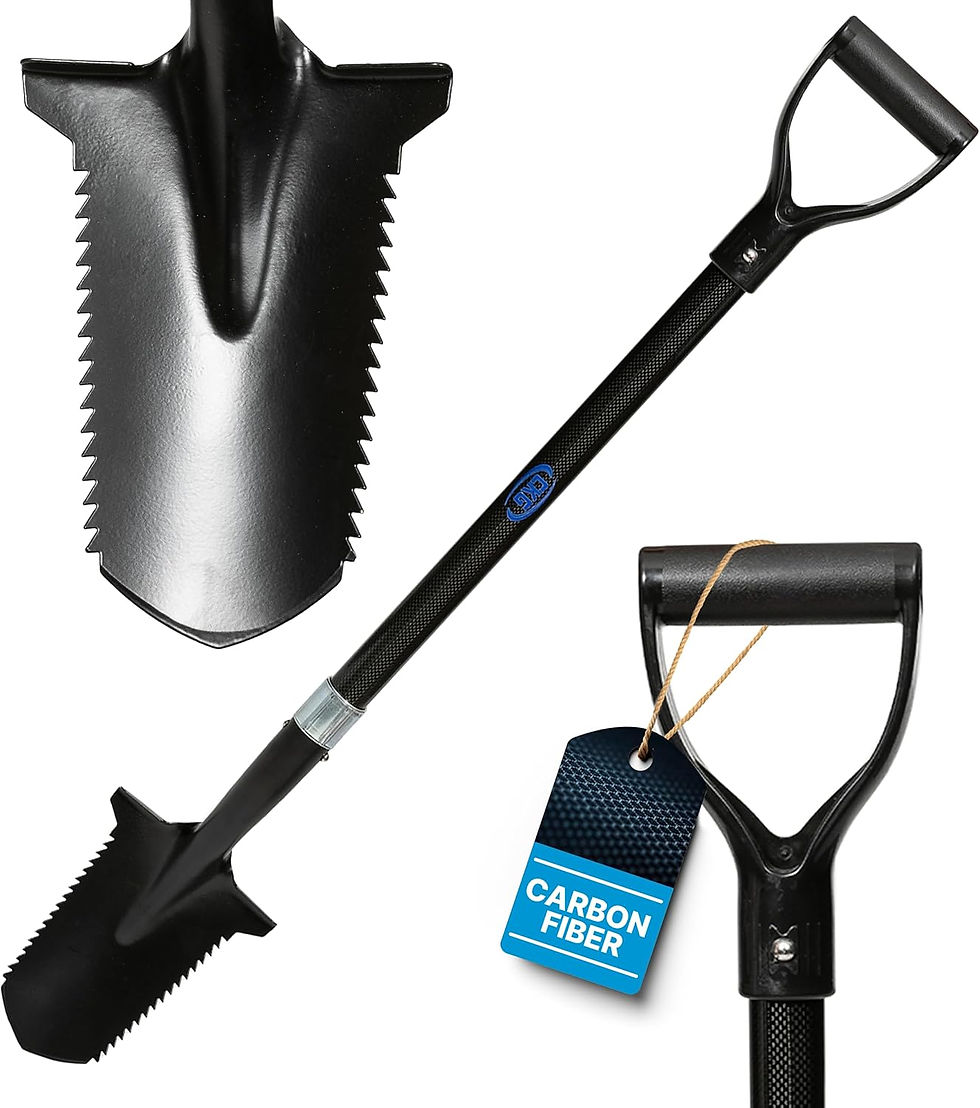

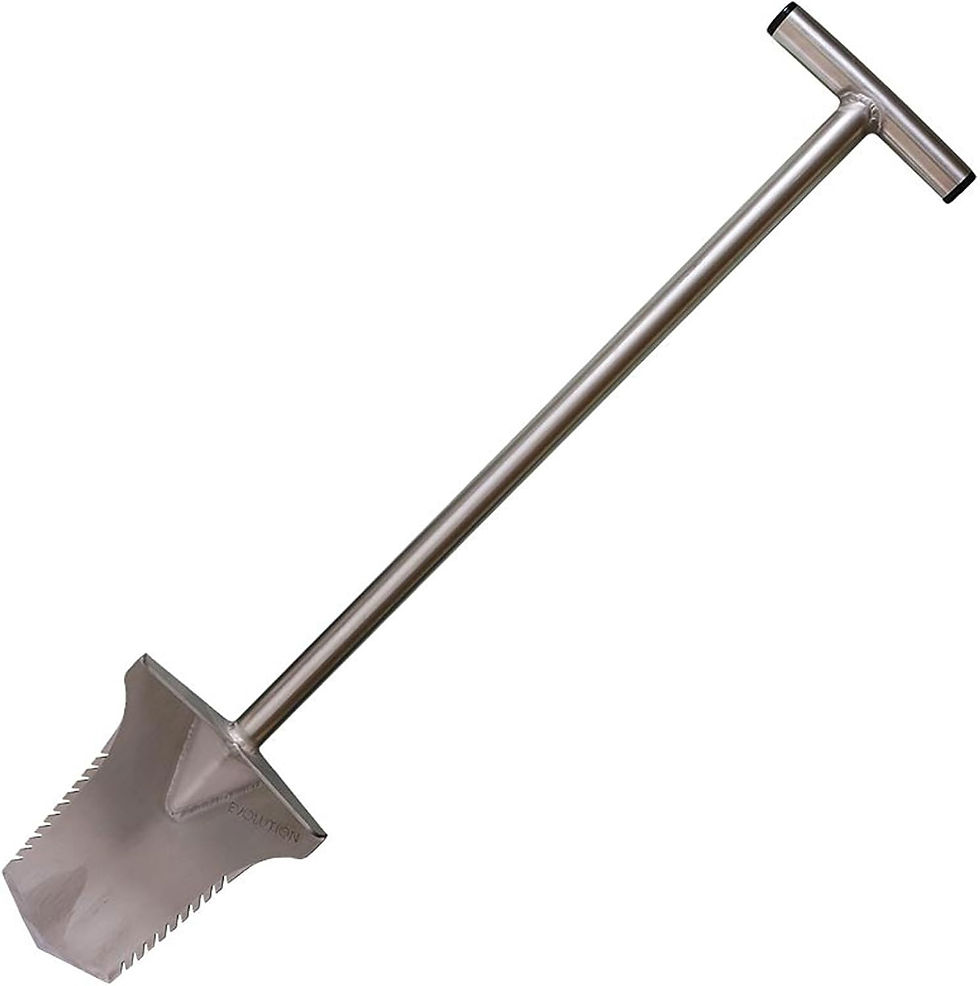
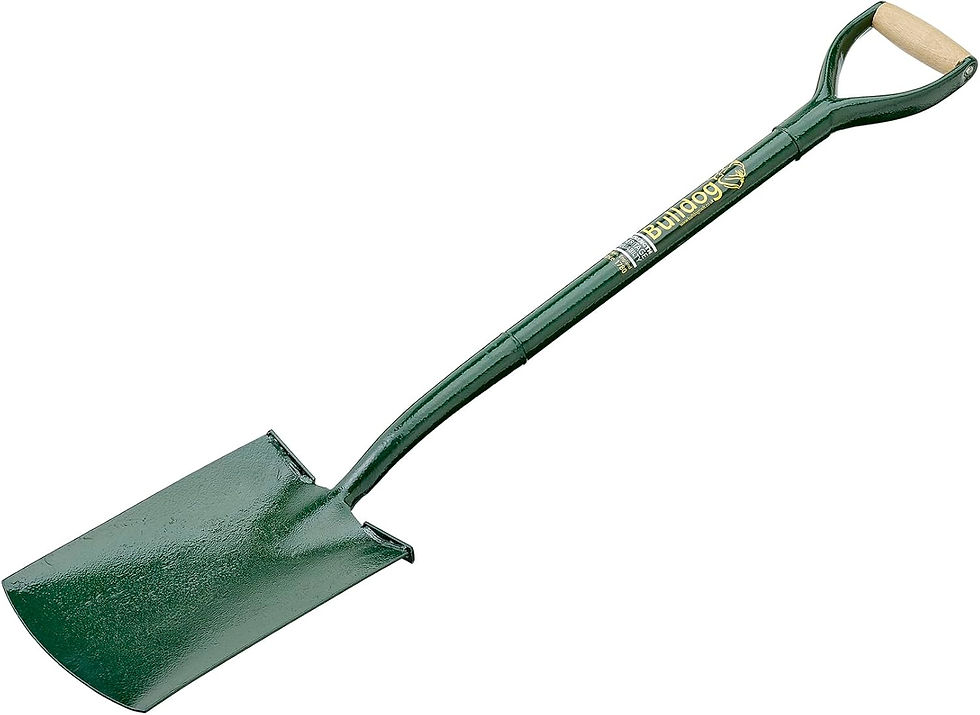
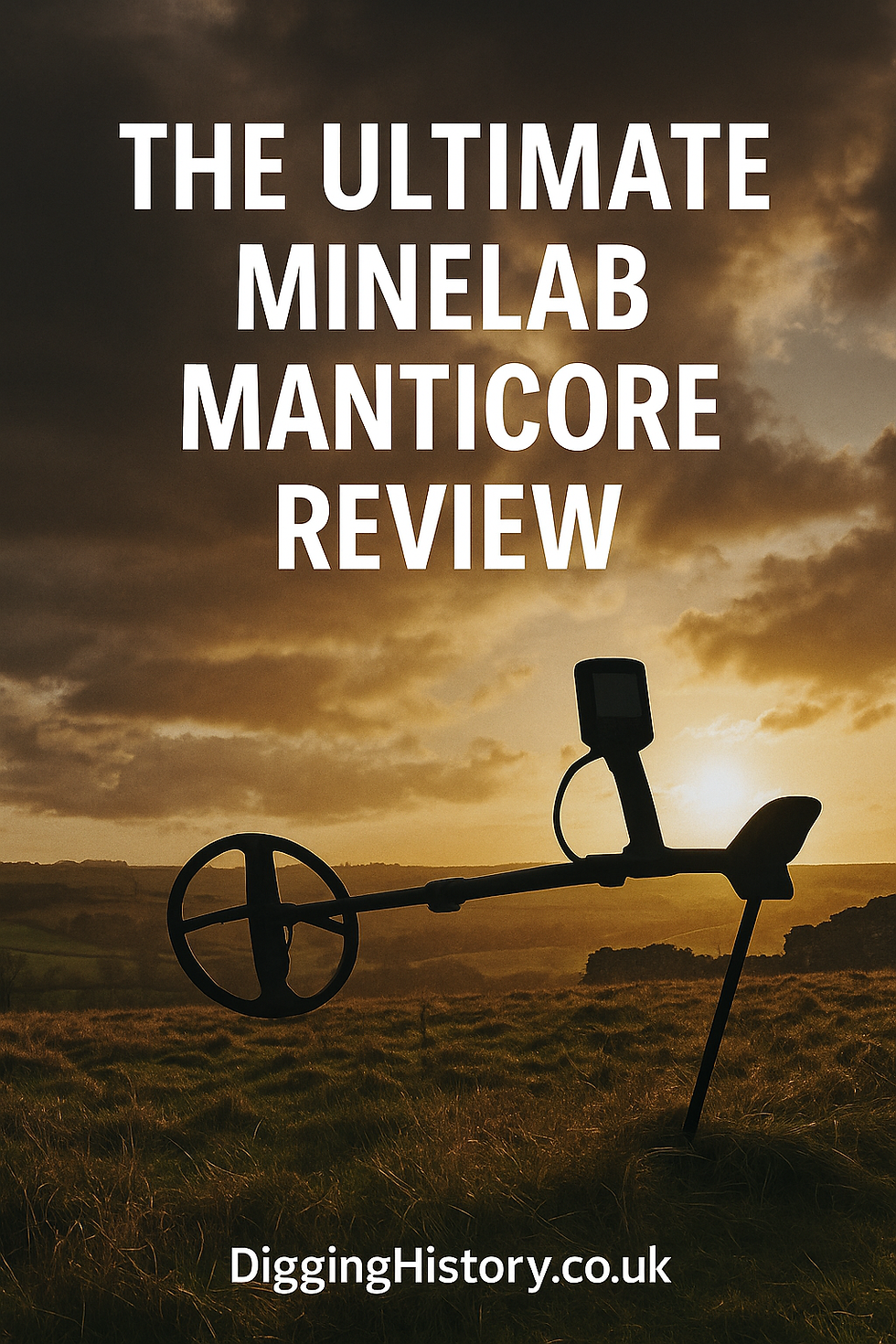
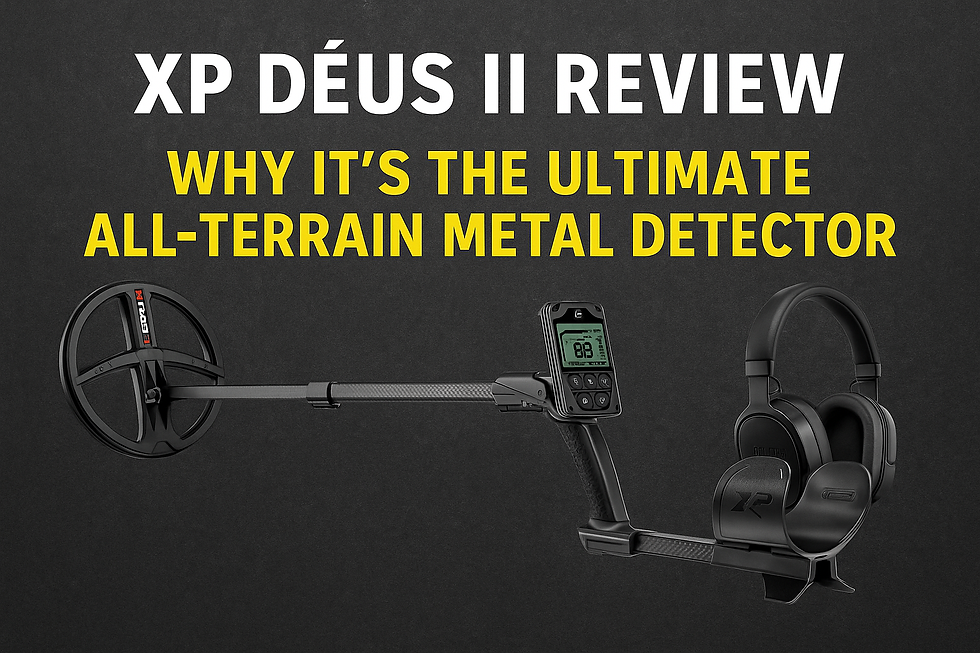

Comments